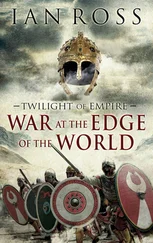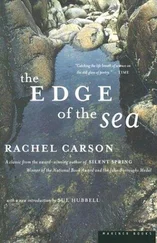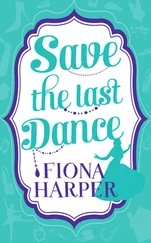There's a lot of overdue talk about “taking care of your people,” sparked by how to keep employees connected during the pandemic. The idea that we are human seems to be intruding into our work consciousness. There's greater awareness and access to mental health resources as well as the recognition that psychological safety is a fundamental premise for great performance. The leaders I admire are addressing the new reality with new tools, whether it's communicating a layoff or helping people adjust to working from home. It's hard, emotional, necessary work for leaders.
And then there are days when it's harder.
Proposal: Adopt a New Mindset for Making Decisions
Consider the following perspective: At the start of the 2020s, we have been presented with a worldwide experiment that affects everything from education to health policy. We have a global control condition – what happens when you shut down offices and confine people to homes? Academic and leadership careers will be made because these conditions reveal some basic assumptions that we could never explore in depth before. For example, most of our beliefs about work and productivity assume a building , whether it is an office, store, or factory. Many of our so‐called best practices assume face‐to‐face interaction . How many of our theories of innovation assume in‐person serendipity like the proverbial water cooler conversation? Challenging these assumptions opens up multitudes of options to observe, experiment, and rethink. But if being confronted with the evidence that our offices were not founts of creative innovation, but of status‐enforcing, energy‐sapping activity without meaningful output, leaders may not make the best decisions for themselves or their companies.
Instead, imagine a different mindset. John DeGioia, Chancellor of Georgetown University, was hired with a “simple” task – create the twenty‐first‐century university. 29 Sounds exciting, except there was the constraint that this modern university must respect over 200 years of academic history and 2000 years of Jesuit / Christian history. In other words, his mandate was actually a complex problem – is there a singular answer to “What is a twenty‐first‐century university?” He believed there were changes needed that they could not predict in advance, and thus not plan for in a traditional way. Instead, he encouraged his team and department heads to collaborate, experiment, and iterate. He knew this would be a challenge for professors and department chairs, and he needed to create room for them to fail – not the usual mandate for proud academic departments.
In a speech where he described the project, Chancellor DiGioia reflected that he told his teams: “We have a result that's not what we expected, and we will have to do something different … will you follow me anyway?” We've been trained to assume systems are complicated when they are complex. We often have reflexive reactions to stress, and as a result, we can make poor decisions. In particular, the simple, but profound decision to take a public stand on a controversial issue can render the most experienced leaders silent with fear of making a mistake. However, my proposal is that we can practice methods to explore uncertainty and complexity with curiosity, create processes to enable others to follow, and train ourselves to sustain our efforts without burning out. Move to the Edge, Declare It Center doesn't protect you from making mistakes. It doesn't ensure that you will always have the best answer. What I hope you get out of this book is that intentional practice, both exterior with our teams and organizations, and interior with ourselves, will enable you to make better decisions.
1 1.Allen C. Bluedorn, Scientific Management (comprising Shop Management, The Principles of Scientific Management, Testimony before the Special House Committee, New York: Harper, 1947), Academy of Management Review 11, no. 2 (April 1, 1986).
2 2.Mark Hamilton, The ad that changed advertising, Medium.com, March 20, 2015, https://medium.com/@marathonmilk; Bob Garfield, Ad Age Advertising Century: The Top 100 Campaigns AdAge (March 2, 1999), https://adage.com/article/special-report-the-advertising-century/ad-age-advertising-century-top-100-campaigns/140918.
3 3.Samuel Arbesman, Overcomplicated, Portfolio, Reprint edition ( June 20, 2017).
4 4.Peter Ho and Adrian W. J. Kuah, “Governing for the Future,” Prism 5, no. 1 (2014), https://cco.ndu.edu/Portals/96/Documents/prism/prism:5-1/Governing_for_the_future.pdf.
5 5.Reader, please note that I do none of these things, but I admire those who do.
6 6.Regarding the planning fallacy, see Daniel Kahneman, Thinking, Fast and Slow (New York: Farrar, Straus, and Giroux, 2011), p. 251.
7 7.Two related perspectives that discuss complexity are from John Allspaw and the fallacies in statistical analysis, Twitter, April 30, 2021, https://twitter.com/allspaw/status/1388156075015381000?s=20.
8 8.The second is that we do work in teams, not individually, but the cultural remnants of “solo” work still influence the way we think about solving problems. Alan Cooper, Twitter, November 8, 2018, https://twitter.com/mralancooper/status/1060553914209071106.
9 9.The Agile Manifesto, https://agilemanifesto.org/.
10 10.A phrase we use at Truss is: “Be Agile, not Do Agile.” There is a limit to the codification of Agile, because when Agile becomes just another gate for certification, companies lose sight of the purpose. Don't do this.
11 11.Eric Ries, The Lean Startup: How Today's Entrepreneurs Use Continuous Innovation to Create Radically Successful Businesses (New York: Crown Business, 2011); Steve Blank, The Four Steps to the Epiphany: Successful Strategies for Products that Win, 5th ed. (Hoboken, NJ: John Wiley & Sons, 2020).
12 12.General Stanley McChrystal, Tantum Collins, David Silverman, and Chris Fussell, Team of Teams: New Rules of Engagement for a Complex World (New York: Portfolio/Penguin, 2015).
13 13.BIPOC refers to Black, Indigenous and People of Color. It is an imperfect term to address Black, Indigenous, Latino/a/x, Indian, and Pacific Islander bodies of culture. There are well‐reasoned arguments against BIPOC, notably those that the desire to create an inclusive term also erases the specific cultural heritage between and within each group.
14 14.“Underrepresented minorities” is used here as a reference to US government designations used to make policy, such as the SBA 8(a) designation. For a software company like Truss, this would include women and Black founders/owners, but in other contexts it would include BIPOC owners as well. While the term may be accurate, it's another imperfect term that emphasizes “otherness” and erases specific context.
15 15.K. Y. Williams and C. A. O'Reilly III. “Demography and Diversity in Organizations: A Review of 40 Years of Research.” Research in Organizational Behavior 20 (1998): 77–140.
16 16.Katherine W. Phillips, Katie A. Liljenquist, Margaret A. Neale, “Is the Pain Worth the Gain? The Advantages and Liabilities of Agreeing with Socially Distinct Newcomers,” Personality and Social Psychological Bulletin (2008).
17 17.Katia Savachuk, “Do Investors Really Care About Gender Diversity?” Stanford Business, September 17, 2019. Article cites a study by David P. Daniels, Jennifer E. Dannals,Thomas Z. Lys and Margaret A. Neale.
18 18.Project Include: https://projectinclude.org/.
19 19.Daniel Kahneman, Thinking, Fast and Slow (New York: Farrar, Straus, & Giroux, 2011), p. 20.
20 20.This is a good meditation practice! However, it's a challenge to do one great breath, much less 30 minutes of attentive breathing.
21 21.There is a great list in Wikipedia, https://en.wikipedia.org/wiki/List_of_cognitive_biases, but I encourage people to read Thinking, Fast and Slow to explore the details of how and why these biases exist.
Читать дальше












